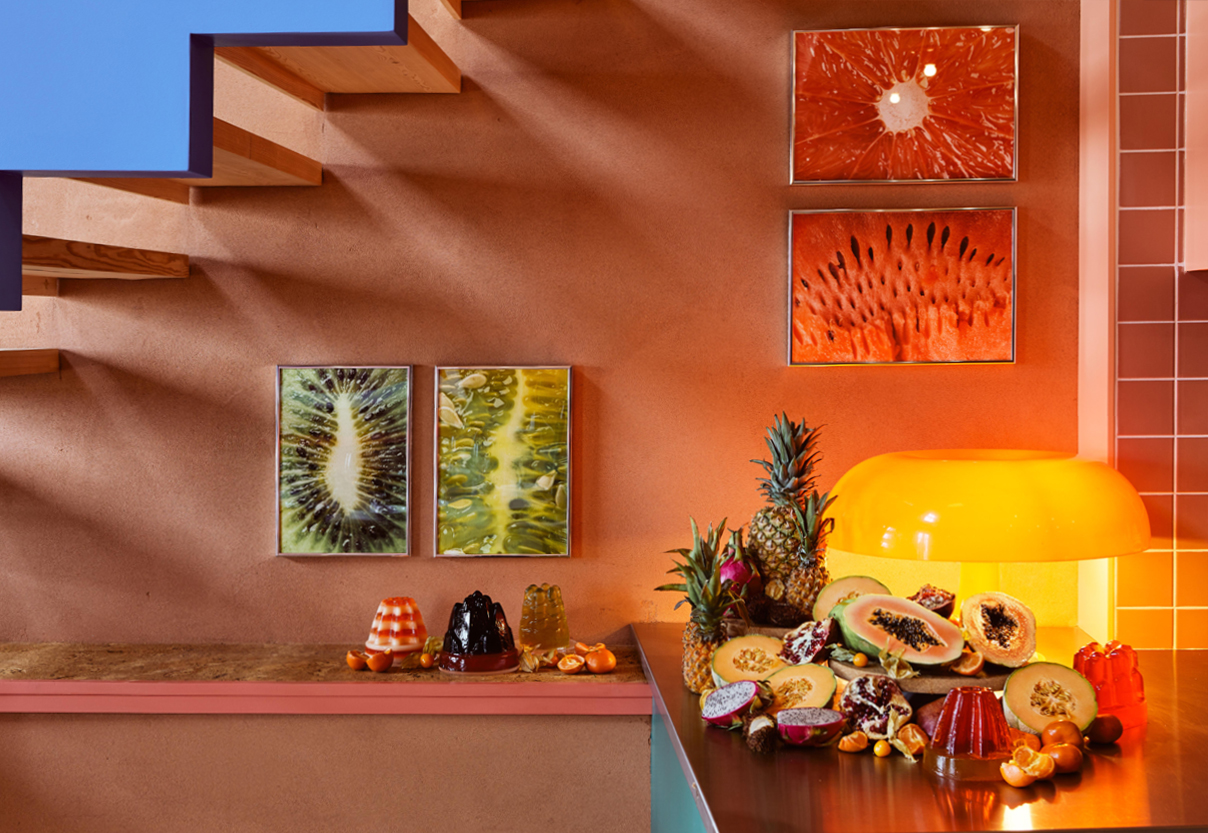Clay is one of the oldest and most versatile materials known to humanity. It has been used for thousands of years in a variety of applications, from pottery and sculpture to construction and natural plasters. In this glossary article, we will delve deep into the world of clay, focusing specifically on its use in natural plasters.
Clay-based plasters are a sustainable and eco-friendly alternative to synthetic materials. They are made from readily available, naturally occurring materials and can be used in a wide range of applications, from interior walls and ceilings to exterior facades. Let’s explore the fascinating world of clay and its use in natural plasters.
What is Clay?
Clay is a naturally occurring material composed primarily of fine-grained minerals. It is typically formed over long periods of time by the gradual chemical weathering of rocks, usually silicate-bearing, by low concentrations of carbonic acid and other diluted solvents. These solvents, mixed with water, cause the rock to decompose and transform into clay.
Clay has a unique set of properties that make it ideal for a variety of applications. It is plastic when wet, allowing it to be easily shaped and molded, and it becomes hard, durable, and resistant to heat and fire when dry or fired in a kiln. These properties have made clay a popular material for pottery, bricks, tiles, and of course, natural plasters.
Types of Clay
There are several different types of clay, each with its own unique properties and uses. These include kaolinite, montmorillonite-smectite, and illite. Kaolinite clay, also known as china clay, is a soft, white clay used in the manufacture of porcelain and is also used in the production of paper, rubber, and paint. Montmorillonite-smectite clay, also known as bentonite, is a highly absorbent clay often used in drilling mud. Illite clay, also known as French green clay, is often used in cosmetics and natural plasters due to its ability to absorb impurities.
Each type of clay has its own unique chemical composition and physical properties, which can affect its performance in different applications. For example, some clays are more plastic and easier to work with than others, while some are more absorbent or have higher heat resistance. These properties need to be taken into account when choosing a clay for a specific application, such as natural plasters.
What are Natural Plasters?
Natural plasters are a type of wall finish made from naturally occurring materials. Unlike synthetic plasters, which are made from a mix of cement, sand, and water, natural plasters are made from a variety of materials including clay, lime, sand, and plant fibers. They are often used in green building and sustainable architecture due to their low environmental impact and health benefits.
One of the key advantages of natural plasters is their ability to regulate humidity levels in a room. They are breathable, allowing moisture to pass through them, which can help to prevent the growth of mold and mildew. They also have a unique aesthetic appeal, with a rich, textured finish that can add character and warmth to a space.
Types of Natural Plasters
There are several different types of natural plasters, each with its own unique properties and uses. These include clay plaster, lime plaster, and gypsum plaster. Clay plaster, as the name suggests, is made from clay, sand, and often straw or other plant fibers. It is highly breathable, easy to work with, and has a warm, earthy aesthetic. Lime plaster is made from lime, sand, and water. It is highly durable, resistant to mold and bacteria, and has a smooth, polished finish. Gypsum plaster, also known as plaster of Paris, is made from gypsum, a soft sulfate mineral. It sets quickly, is easy to work with, and has a smooth, white finish.
Each type of natural plaster has its own unique set of advantages and disadvantages, and the best choice will depend on the specific requirements of the project. For example, clay plaster is a great choice for interior walls due to its breathability and aesthetic appeal, while lime plaster is often used on exterior walls due to its durability and resistance to weathering.
Clay in Natural Plasters
Clay is a key ingredient in many types of natural plasters. It acts as a binder, holding the other components of the plaster together, and gives the plaster its plasticity, making it easy to apply and shape. Clay also contributes to the breathability of the plaster, allowing moisture to pass through and helping to regulate humidity levels in the room.
There are several different types of clay that can be used in natural plasters, each with its own unique properties. For example, kaolinite clay is often used due to its high plasticity and ease of use, while illite clay is popular for its absorbent properties and green color. The choice of clay can have a significant impact on the performance and aesthetic of the plaster, so it’s important to choose the right type for your specific needs.
Benefits of Clay in Natural Plasters
There are many benefits to using clay in natural plasters. One of the main advantages is its environmental friendliness. Clay is a naturally occurring material that is abundant and renewable. It requires minimal processing and energy to produce, making it a sustainable choice. Clay plasters also have a low embodied energy, meaning they require less energy to manufacture and transport than synthetic materials.
Another key benefit of clay in natural plasters is its health benefits. Clay is non-toxic and free from harmful chemicals, making it a safe choice for indoor environments. It also has the ability to regulate humidity levels, absorbing excess moisture when the air is humid and releasing it when the air is dry. This can help to create a healthier indoor environment by preventing the growth of mold and mildew.
How to Apply Clay Plaster
Applying clay plaster is a relatively straightforward process, but it does require some skill and knowledge. The first step is to prepare the surface. This may involve cleaning the wall, applying a primer, or roughening the surface to help the plaster adhere. Once the surface is prepared, the clay plaster can be applied using a trowel or a sprayer. It’s important to apply the plaster evenly and to smooth out any lumps or bumps.
Once the plaster is applied, it needs to be left to dry. This can take anywhere from a few hours to a few days, depending on the thickness of the plaster and the conditions in the room. Once the plaster is dry, it can be finished in a variety of ways, from a simple polish to a decorative paint or sealant. The finished plaster will have a rich, textured finish that adds character and warmth to the space.
Conclusion
Clay is a versatile and sustainable material that has been used for thousands of years in a variety of applications. In the world of natural plasters, clay plays a key role, acting as a binder, providing plasticity, and contributing to the breathability of the plaster. Whether you’re a builder, a homeowner, or simply someone with an interest in sustainable materials, understanding the properties and uses of clay can help you make informed decisions and create beautiful, healthy, and sustainable spaces.
From the types of clay and their unique properties to the benefits and application process of clay plasters, we hope this glossary article has provided you with a comprehensive understanding of clay in natural plasters. As we continue to seek out sustainable and eco-friendly building materials, clay and natural plasters will undoubtedly play a crucial role in shaping our built environment.

